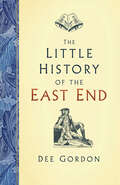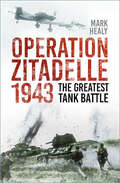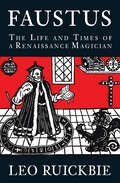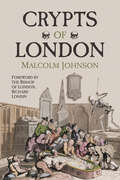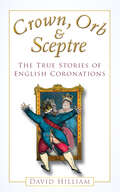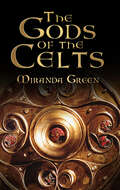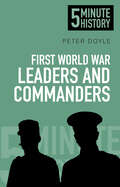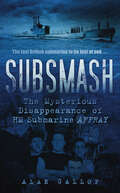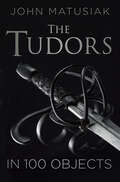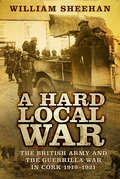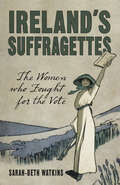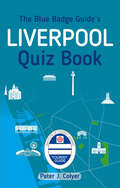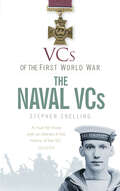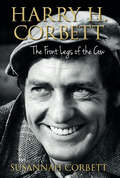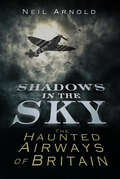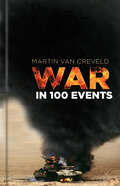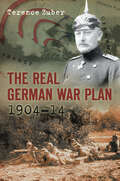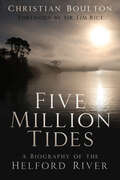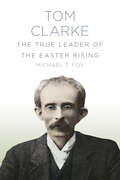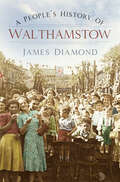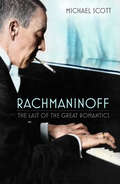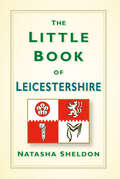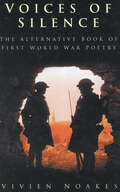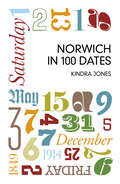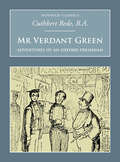- Table View
- List View
The Little History of the East End
by Dee GordonThe modern history of London’s East End has been well-documented – but what of its ancient roots? From embryonic beginnings in the Stone Age, through Roman rule and civil wars, all the way to its jam-packed twentieth-century timeline, the East End has always been a place of innovation, diversity and change. Written by an East Ender with a love of her roots, The Little History of the East End is an engaging look at the area’s history through the people that made it, one that will enthral and surprise both residents and visitors alike.
Operation Zitadelle 1943: The Greatest Tank Battle
by Mark HealyIn July 1943, Hitler launched Operation Zitadelle, the last German offensive on the Eastern Front. It was an attempt to shorten the German lines by eliminating the Kursk salient and was designed to result in the encirclement of the Red Army. In reality, the German tanks came up against impenetrable Russian defences: minefields, artillery and anti-tank emplacements, spread through lines 250km deep and manned by Russian troops whose actions often verged on the suicidal. The greatest tank battle in history, Operation Zitadelle assured the Nazis’ defeat and was ‘the swan song of the German tank arm’.Involving over 9,000 tanks, 5,000 aircraft, 35,000 guns and mortars, 2.7 million troops and 230,000 casualties, the Battle of Kursk’s scale and barbarity eclipsed all other clashes in Europe. In this book, historian Mark Healy gives a clear, concise account of those dramatic days in 1943.
Faustus: The Life and Times of a Renaissance Magician
by Leo RuickbieFive hundred years ago the legend was born of a man who sold his soul to the Devil for power, wealth and women. It is a legend that has inspired genius and still inspires high art and popular culture alike. Around the world there are hundreds of nightly performances of Geothe's Faust, as well as actual attempts at soul-selling on eBay. Faustus has rightly been described as an 'icon of modern culture'. But in 500 years no one has written his biography - until now. 'Faustus' is the real story behind the legend. It is the story of a sixteenth-century scandal, of a man who claimed mastery of the forbidden magical arts and dared to rival the miracles attributed to Jesus. he evoked uproar and was accused of heinous crimes. But Faustus was not a charlatan; nor was he in league with the Devil. To find the real Faustus is to find the true history of his age, and Leo Ruickbe expertly takes the reader on a tour of war-torn Italy, Reformation Wittenberg and the magnificence of Charles V's court. The life of the legend becomes as real as any living person.
Crypts of London: Past and Present
by Malcolm Johnson Richard LondinAfter the devastation of 1666, the Church of England in the City of London was given fifty-one new buildings in addition to the twenty-four that had survived the Great Fire. During the next hundred years others were built in the two cities of London and Westminster, most with a crypt as spacious as the church above. This book relates the amazing stories of these spaces, revealing an often surprising side to life – and death – inside the churches of historic London. The story of these crypts really began when, against the wishes of architects such as Wren and Vanbrugh, the clergy, churchwardens and vestries decided to earn some money by interring wealthy parishioners in their crypts. By 1800 there were seventy-nine church crypts in London, filled with the last remains of Londoners both illustrious and ordinary. Interments in inner London ended in the 1850s; since then, fifty-two crypts have been cleared, and five partially cleared – in each case resulting in the gruesome business of moving human remains. Today, many crypts have a new life as chapels, restaurants, medical centres and museums. With rare illustrations throughout, this fascinating study reveals the incredible history hidden beneath the churches of our capital. Malcolm Johnson is a retired priest, and has a PhD from King’s College, London. His well-received St Martin-in- the-Fields was published by Phillimore in 2005.
Crown, Orb and Sceptre: The True Stories of English Coronations
by David HilliamCoronations are very public occasions, typically seen as meticulously planned formal ceremonies where everything runs smoothly. But behind the scenes at Westminster Abbey lie extraordinary but true stories of mayhem, confusion and merriment. In this book we travel through over a thousand years of England's history to reveal the real character of its kings and queens. Also packed with facts about how the service, traditions and accessories have changed over the years, Crown, Orb & Sceptre provides both a compelling read and an accessible and irreverent reference guide to one of the most spectacular ceremonies in England's heritage.
The Gods of the Celts
by Miranda GreenThe presence of gods was felt in every corner of the Celtic world, and influenced all areas of life in Celtic society. This fascinating book delves into these corners to examine all aspects of the gods, ritual customs, cult objects and sacred places of the ancient Celtic peoples. Miranda Green introduces the Celts and the evidence that they left behind, placing them in their geographical and chronological context, and continues on to look at Celtic cults of the sun and sky, animals and animism, mother goddesses, water gods and healers, as well as examining the influence of religion on war, death and fertility. Embracing the whole of the Celtic world from Ireland to Australia, and covering from 500 BC to AD 400, this is a rewarding overview of the evidence for Celtic religions, beliefs and practices which uses modern scholarship to bring a mysterious and captivating part of European history to life.
First World War Leaders and Commanders: 5 Minute History
by Peter DoyleHow much can you really find out about the Leaders and Commanders of the First World War in five minutes? This handy little history book will surpass all your expectations and leave you well versed on all you wish to know, and maybe even a little bit more… Who were the leaders? Who commanded the British Army on the Somme? Which general committed suicide in shame? Who stopped the German offensive at Verdun? Who invented stormtroopers? Jam-packed with facts and first-hand accounts of the action, all woven together in an accessible way by an expert in the field, this 5 Minute History is a valuable addition to anyone’s bookshelf, ready to be delved into at a moment’s notice.
Subsmash: The Mysterious Disappearance of HM Submarine Affray
by Alan GallopIn April 1951, the disappearance of HM submarine Affray knocked news of the Korean War and Festival of Britain from the front pages. Affray had put to sea on a routine peacetime simulated war patrol in the English Channel. She radioed her last position at 2115hrs on 16 April, 30 miles south of the Isle of Wight - preparing to dive. This was the last signal ever received from the submarine. After months of searching, divers eventually discovered Affray resting upright on the sea bottom with no obvious signs of damage to her hull. Hatches were closed tight and emergency buoys were still in their casings. It was obvious that whatever had caused Affray to sink, and had ended the lives of all those on board, had occurred quickly. Sixty years later, in this compelling maritime investigation, Alan Gallop uses previously top secret documents, interviews with experts and contemporary news sources to explore how and why Affray became the last British submarine lost at sea - and possibly the greatest maritime mystery since the Marie Celeste.
A History of the Tudors in 100 Objects
by John MatusiakThis seminal period of British history is a far-off world in which poverty, violence and superstition went hand-in-hand with opulence, religious virtue and a thriving cultural landscape, at once familiar and alien to the modern reader. John Matusiak sets out to shed new light on the lives and times of the Tudors by exploring the objects they left behind. Among them, a silver-gilt board badge discarded at Bosworth Field when Henry VII won the English crown; a signet ring that may have belonged to Shakespeare; the infamous Halifax gibbet, on which some 100 people were executed; scientific advancements such as a prosthetic arm and the first flushing toilet; and curiosities including a ladies’ sun mask, ‘Prince Arthur’s hutch’ and the Danny jewel, which was believed to be made from the horn of a unicorn. The whole vivid panorama of Tudor life is laid bare in this thought-provoking and frequently myth-shattering narrative, which is firmly founded upon contemporary accounts and the most up-to-date results of modern scholarship."Everything you wanted to know about the Merrie England of the Tudors and some things you probably did not. If the Tudors seem far removed, they are also curiously modern. They had spectacles and metal prosthetic arms, while a “fuming pot” was but a prototype Air Wick. Matusiak’s mini essays accompanying the photographs are perfectly sculpted and the book is beautiful to hold." - Charlotte Heathcote, The Sunday Express
A Hard Local War: The British Army and the Guerrilla War in Cork 1919-1921
by William SheehanFOLLOWING years of discontent over Home Rule and the Easter Rising, the deaths of two Royal Irish Constabulary policemen in Soloheadbeg at the hands of the IRA in 1919 signalled the outbreak of war in Ireland. The Irish War of Independence raged until a truce between the British Army and the IRA in 1921, historical consensus being that the conflict ended in military stalemate. In A Hard Local War, William Sheeham sets out to prove that no such stalemate existed, and that both sides were continually innovative and adaptive. Using new research and previously unpublished archive material, he traces the experience of the British rank and file, their opinion of their opponents, the special forces created to fight in the Irish countryside, RAF involvement and the evolution of IRA reliance on IEDs and terrorism.
Ireland's Suffragettes: The Women Who Fought for the Vote
by Sarah-Beth WatkinsIreland's Suffragettes is a collection of biographical essays introducing the suffragettes who influenced Ireland's struggle for women's rights. Many of the women were political activists while others became militant suffragettes between 1912 and 1914. The struggle of the suffragettes is different to that of the UK, in that many Irish suffragettes were also included in the struggle for independence and the inclusion of women in the trade unions movement. Drawing on primary sources located in the National Archives and the National Library, Ireland's Suffragettes will bring to life not only the most famous names in the suffragette movement but also the other women who made women's rights their lives work.
The Blue Badge Guide's Liverpool Quiz Book
by Peter J. ColyerCelebrating Liverpool’s cultural heritage, world-class sport and unrivalled musical legacy, this quiz book invites you to come on a wide-ranging exploration of this vibrant city. Peel away its many layers in the company of one of Liverpool’s top Blue Badgetourist guides.These 22 tours will inspire you, your family, colleagues and friends to leap from page to pavement in the entertaining company of a local expert. Have fun!This book is a welcome addition to a series of regional quiz books written exclusively by Blue Badge guides – ‘Britain’s best guides’ – local, professional guides rigorously examined by the Institute of Tourist Guiding, the industry’s standard-setting body. World-renowned for their knowledge, interpretation skills and enthusiasm for their area!www.britainsbestguides.org
VCs of the First World War: The Naval VCs
by Stephen SnellingHere is a complete record of almost fifty men who won the Victoria Cross while serving in the Royal Navy during the First World War. They include the conflict’s youngest and oldest winners in operations ranging from the Atlantic to the coast of Africa, from the Straits of Otranto to the rivers of Mesopotamia. These awards were won in all manner of fighting ships, from disguised schooner to light cruiser, motor launch to submarine, and river steamer to battle cruiser. Following the established series style, The Naval VCs charts the lives and careers of the recipients and presents graphic accounts of the VC actions based on original material, much of it from eyewitness sources.
Harry H. Corbett: The Front Legs of the Cow
by Susannah CorbettHarry H. Corbett rose from the slums of Manchester to become one of the best-known television stars of the 20th century. Having left home as a 17-year-old Royal Marine during the Second World War, he fought in the North Atlantic and the jungles of the Pacific and witnessed first-hand the devastation wrought by the Hiroshima bomb. On his return home he wandered into the local theatre company and landed a starring role – The Front Legs of the Cow. Soon becoming a leading light in Joan Littlewood’s Theatre Workshop and a widely-respected classical stage actor, his life was changed forever by the television comedy Steptoe and Son. Overnight he became a household name as the series drew unparalleled viewing figures of over 28 million, with fans ranging from the working classes to the Royal Family. Naturally shy and a committed socialist, fame and fortune didn’t sit easily on his shoulders, and for the next twenty years, until his untimely death at the age of only 57, he had to learn how to be ‘’Arold’. Written by his daughter, Susannah Corbett, an actor herself, this is the first biography of Harry H. Corbett, the man who was once described as being ‘the English Marlon Brando’.
Shadows in the Sky: The Haunted Airways of Britain
by Neil ArnoldAlthough the saying, ‘Pigs might fly…’ may bring a smile to one’s lips, even stranger things have been reported as appearing in Britain’s skies over the centuries. Eye-witnesses have testified that various terrifying and bizarre forms have appeared in the skies, from ghostly planes, phantom airships and UFOs, to reports of sky serpents, celestial dragons, flying jellyfish, rains of fish (or blood, or metal, or frogs…) – even reports of a griffin seen over London! It also considers reports of haunted aircraft hangars and airfields. Shadows in the Sky compiles hundreds of accounts from the spine-chilling to the downright bizarre, that’ll keep your eyes fixed looking upwards!
War in 100 Events
by Martin Creveld‘War is a duel written large.’ How did we get from clubs and spears to machine guns and drone missiles? What led to the human race firing projectiles across a no-man’s-land, from straightforward warfare to spies and insurgency? Here renowned military historian Martin van Creveld has compiled a concise guide to the history of war in 100 key events, from 10,000 BCE to the present day: Stone Age ‘wars’; Vikings raids; medieval conflicts; revolutionary wars; Napoleonic wars; world wars; the Iraq war; women in war and much more. With intriguing facts and a worldwide range, War in 100 Events is an immensely entertaining volume for military buffs and laymen alike.
The Real German War Plan, 1904-14
by Terence ZuberThe Real German War Plan 1904-14 fundamentally changes our understanding of German military planning before the First World War. On the basis of newly discovered or long-neglected documents in German military archives, this book gives the first description of Schlieffen's war plans in 1904 and 1905 and Moltke's plans from 1906 to 1914. It explodes unfounded myths concerning German war planning, gives the first appraisal of the actual military and political factors that influenced it, proves conclusively that there never was a 'Schlieffen Plan' and reveals Moltke's strategy for a war against Russia from 1909 to 1912. Tracing the decline in the German military position and the recognition by 1913 that Germany would be forced to fight outnumbered on both the eastern and western fronts, it is an essential read for anyone with an interest in the First World War.
Five Million Tides: A Biography of the Helford River
by Christian BoultonFive Million Tides is the story of Cornwall’s Helford River from the Stone Age to the dawning of the twenty-first century. From prehistoric pioneers and their megalithic successors, this account goes on to expose a remarkable truth: the Helford became one of Europe’s most significant waterways during the Iron Age and Roman periods. Despite being mainland Britain’s southernmost safe haven, it has not always been a place of good fortune – once a thriving seat of Celtic Christianity the river would ultimately become more synonymous with lawless seafarers. Nor could it be relied upon for sanctuary from every storm, as the graves of mariners in its village churchyards attest. Although now overshadowed by its more famous sibling estuaries, the Helford is an enigmatic beauty of the family whose rich past deserves wider knowledge.
Tom Clarke: The True Leader of the Easter Rising
by Michael T. FoyLong overshadowed by fellow republicans Patrick Pearse and James Connolly, Tom Clarke was the man who made the Easter Rising possible. During an extraordinary life dedicated to Irish freedom he rose from humble origins and endured thirty years of struggle, imprisonment and exile before becoming a master conspirator in the Easter Rising. Endowed with a charisma and moral ascendancy, he held together a disparate group of followers and they, in turn, recognised his indispensable leadership by insisting that his name alone should have pride of place on the Proclamation. It was a gesture that, in a sense, guaranteed Clarke immortality; it also proved to be also his death warrant. But death held no terrors for Clarke who was to die satisfied in the belief that, with the sight of a tricolour flying over the GPO, he had changed the course of Irish history.
A People's History of Walthamstow
by James DiamondWalthamstow is well known as the home of William Morris, a former greyhound racing track and the boy band East 17. It’s also been home to communities of people for thousands of years. This history tells the unique story of Walthamstow from the area’s first Iron Age settlements to its Anglo-Saxon place names, medieval manors, agricultural hamlets and Victorian terraced housing. It includes the area’s history in the twentieth century as a suburb of London. The development of Walthamstow is told from the perspective of the people who have lived there and who have helped to shape the place known around Britain today. Their stories are captured using photographs and illustrations, which bring to life how they have lived and worked over the years.
Rachmaninoff: The Last of the Great Romantics
by Michael ScottThe musical child of Russia’s golden age, Sergei Rachmaninoff, was the last of the great Romantics. Scorned by the musical establishment until very recently, his music received hostile reviews from critics and other composers. Conversely, it never failed to find widespread popular acclaim, and today he is one of the most popular composers of all time.Biographer Michael Scott investigates Rachmaninoff’s intense and often melodramatic life, following him from imperial Russia to his years of exile as a wandering virtuoso and his death in Beverly Hills during the Second World War, worn out by his punishing schedule.In this remarkable biography which relates the man to his music, Michael Scott tells the colourful story of a life that spanned two centuries and two continents. His original research from the Russian archives, so long closed to writers from the West, brings us closer to the spirit of a man who genuinely believed that music could be both good and popular, a belief that is now triumphantly vindicated.
The Little Book of Leicestershire
by Natasha SheldonTHE LITTLE BOOK OF LEICESTERSHIRE is a compendium full of information which will make you say, ‘I never knew that!’ Contained within is a plethora of entertaining facts about Leicestershire’s famous and occasionally infamous men and women, its literary, artistic and sporting achievements, customs ancient and modern, transport, battles and ghostly appearances. A reliable reference book and a quirky guide, this can be dipped in to time and time again to reveal something new about the people, the heritage, the secrets and the enduring fascination of the county. A remarkably engaging little book, this is essential reading for visitors and locals alike.
Voices of Silence: The Alternative Book of First World War Poetry
by Vivien NoakesThe poetry of the First World War has determined our perception of the war itself. This volume features poetry drawn from old newspapers and journals, trench and hospital magazines, individual volumes of verse, gift books, postcards, and a manuscript magazine put together by conscientious objectors.
Norwich in 100 Dates
by Kindra JonesExperience 100 key dates that shaped Norwich's history, highlighted its people's genius (or silliness) and embraced the unexpected. Featuring an amazing mix of pivotal, social, criminal and sporting events, this book reveals a past that will fascinate, delight and even shock residents and visitors alike.
Mr Verdant Green: Nonsuch Classics
by Cuthbert BedeA cult college novel on its original publication in 1853, this is the funny tale of the adventures of a naive freshman, set loose on the dreaming spires of Oxford. This edition contains the author's original illustrations.
